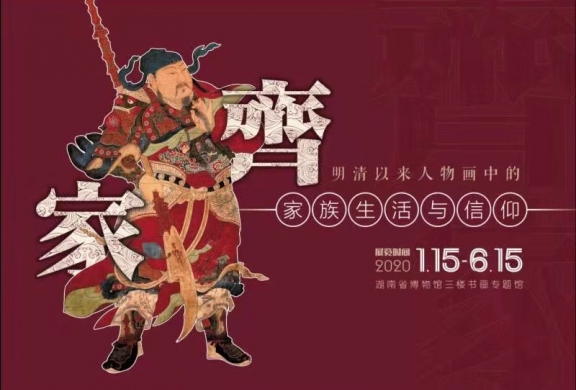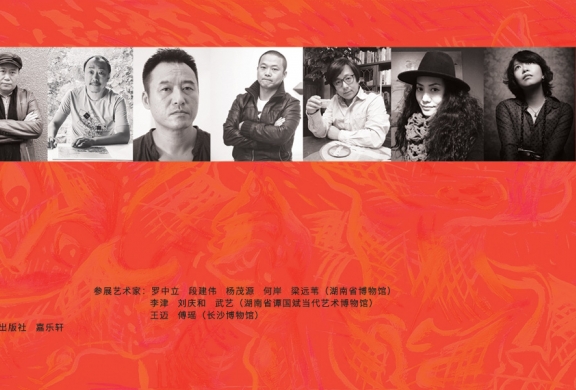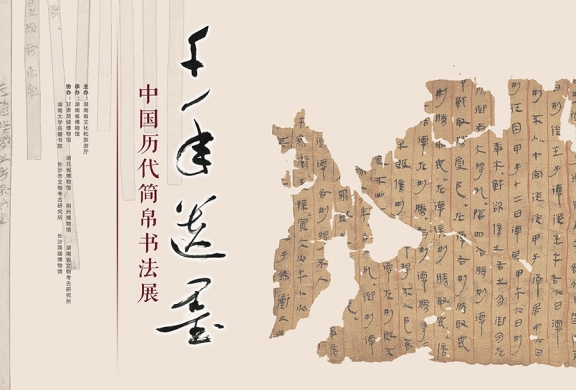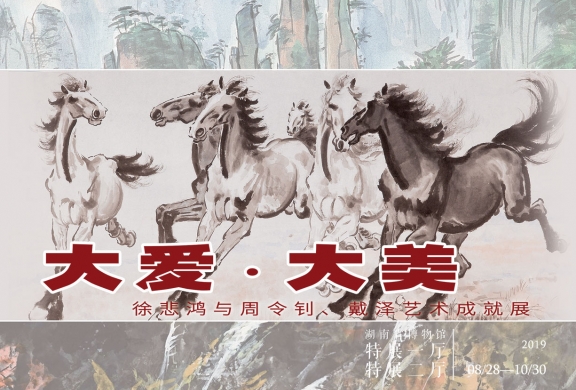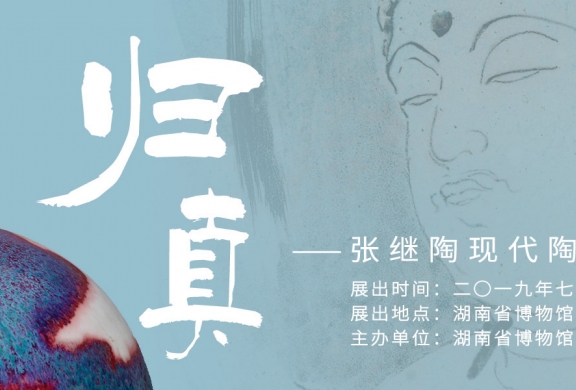Past Exhibitions
From Renaissance to Impressionism: Five Hundred Years of European PaintingsNo.2 Exhibition Hall, 2nd Floor 2020.05.29 - 2020.09.13 In the exhibition “From Renaissance to Impressionism: Five Hundred Years of European Paintings”, 60 European masters’ paintings from the Indianapolis Museum of Art at Newfields were particularly selected. The 60 chosen artworks, with extraordinary techniques and significant artistic value, offer an overview of European paintings from the 14th to the 19th century. Works of the most eminent European masters such as Titian, Rubens, Rembrandt, El Greco, Goya, Turner, Monet, Gauguin, Renoir, etc., are included. Artworks of the exhibition cover different geological regions including Italy, the Netherlands, England and France, and contain principal phases and major schools of European art history including the Renaissance, Baroque, Rococo, Naturalism and Classicism, Neoclassicism, Romanticism, Realism and Impressionism. During this historical period (14th to 19th century), the European economy grew at an unprecedented rate, the society were under radical changes, and the art of painting witnessed major evolution from classics to modernism, with its historical meaning and profound influence lasting till today. |
Family Life and Beliefs in the Figure Paintings Since the Ming and Qing Dynasties3rd Floor 2020.01.15 - 2020.06.15 |
Experience and Strategy: the Art Changsha 2019No.1 and No.2 Special Exhibition Hall,1F 2019.12.07 - 2020.02.06 At 2:00 p.m. on December 7, 2019, “Experience and Strategy: the Art Changsha 2019” was officially unveiled in the Art Hall, 1st Floor, Hunan Museum. Since 2007, Hunan Museum has held six “Art Changsha” consecutively, and this year ushers in the 7th “Art Changsha”. This is an “atypical cultural landscape” among Chinese major museums. In the 21st century, the functions and missions of a museum began to shift greatly due to the innovations of ideas and technology. The position of museums as cultural hubs has been reemphasized and reinforced. From the perspectives of both time and space, museums are no longer limited to “collecting history”, but are endowed with a value orientation of connecting reality and the future. Therefore, it is essentially an exploration of its functions and the boundaries as well as its relations with the contemporary society for a museum to hold a contemporary art exhibition. This exhibition, featured by an integration of academic and art, apparently reflects the fields of “contradiction” between historical relics and contemporary art. In nature, it is a deep conversation that is based on rich historical materials in the museum and digs into the history and contemporary arts. By implementing the new concepts and ideas of “enlivening” the relics, “merging” the arts into life, and “inviting” the audience to join, this exhibition will further promote cultural confidence, improve public culture and artistic literacy and contribute to keeping up with people’s ever-growing needs for a better life! |
Exhibition of the Chinese ancient calligraphy on bamboo slips and silkNo.2 Special Exhibition Hall,1F 2019.11.10 - 2019.11.30 To write on bamboo slips and silk is new and strange to us today. Our encounter with the calligraphy on bamboo slips and silk began with the archaeological discoveries at the beginning of the 20th century while the calligraphy on bamboo slips and silk had been a daily life until the popularization of paper. The unearthed books on bamboo slips and silk were written from the Warring States to Wei and Jin dynasties, spanning for nearly a thousand years. Later on, the inscriptions on bronzes and tablets were used by ancient Chinese calligraphy learners as models instead of the calligraphy works on bamboos and silk because these early bamboo and silk works have been lost in history. In the Qing dynasty, "epigraphy" was incorporated into the aesthetic system of calligraphy. It exerted profound influence on contemporary calligraphy learners in aspects from aesthetic taste to the model selection. Now faced with a large number of diverse calligraphy works on bamboos and silk, we have noticed the possibility of rewriting the history of Chinese calligraphy. These works recorded the factors affecting the writing effect including the calligrapher’s writing habits and strokes, aesthetic taste of different times, customs of different regions, different writing tools and styles. It is difficult to use the existing theoretical system of calligraphy to interpret the complexity of font evolution and the characteristics of the times in the layout in silk calligraphy, so only when we abandon the traditional cognition and immerse ourselves in these works can we feel the beauty of them. This exhibition aims to restore the diversity and richness of the calligraphy on bamboos and silk as much as possible, outline its development process from the Warring States to the Wei and Jin dynasties, and inspire new thoughts on Chinese calligraphy. |
Exhibition of Artworks by Xu Beihong, Zhou Lingzhao and Dai ZeNo.1 and No.2 Special Exhibition Hall,1F 2019.08.28 - 2019.10.30 Xu Beihong, the first President of China Central Academy of Fine Arts(CAFA), is a master of modern painting and art and alsoan art educator. Zhou Lingzhao and Dai Ze were both invited by Xu Beihong to teach at the CAFA, and they both adhere to the direction of art education and creation initiated by Xu Beihong. As pioneers of Chinese art in the 20th century and the founders of Chinese modern art education, the three artists have made historic contributions to the establishment of the Chinese modern art education system. |
Reditus & Veritas –Exhibition of Modern Ceramics by Zhang JitaoNo.1 Special Exhibition Hall,1F 2019.07.10 - 2019.08.08 Zhang Jitao, born in 1931 in Changsha, Hunan, currently resides in Taiwan. After moving to Taiwan in 1949, he attended and graduated from Military Technical School and Military Foreign Languages School. In 1976, he learnt under the famous Taiwanese ceramicist Mr. Lin Baojia and from then on has been devoting his body and soul into ceramic creations. Zhang has always followed his master's ideology of "Ceramics Living Arts"; his artworks fused both the past and the present, connecting beauty and functionality, most of his works are based on Chinese traditional containers, which he then integrates with modern ceramics' design and functionality, along with glazes of his personal style. This clearly portrays the meaning of ceramics living: A fuse of innovation and aesthetics. In November, 2014, Mr. Zhang Jitao donated 75 sets (99 pieces of artwork) of the most iconic works in his ceramics career to the Hunan Museum. Within the collection, there are ceramic plates that cleverly combine calligraphy with paintings, vivid and lively animal ceramic sculptures and colorful glazed ceramics. These works condense Mr. Zhang' s perception of life, carrying his many years of creative passion and filled with a rich philosophy of life. This exhibition is truly a cultural feast of modern ceramics. |


